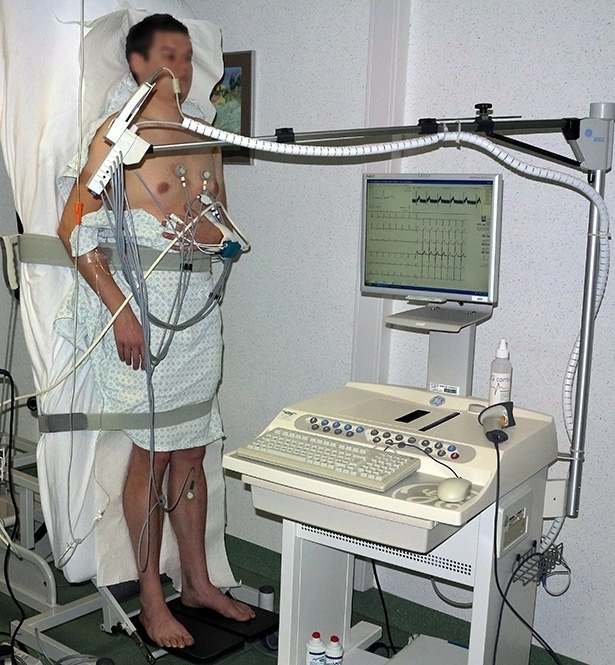Tilt table test
What is it?
What is it?Sudden loss of consciousness (fainting or syncope) can be induced by a drop in blood pressure or be the result of a slowed heart rate. Both phenomena can occur in combination. Your susceptibility to this can be examined through the tile table test.
What is the process?
What is the process?Preparation
You will be admitted to the day hospital. You need to be fasting: that means at least two hours for clear fluids (only water, tea and coffee), at least six hours for a light meal and dairy products and at least eight hours for a regular meal. You may take your medication as agreed with the physician.
You will be given a gown to wear. The nurse places an IV line in your arm to administer medication later.
The procedure is performed in the consultation room.
Procedure
You will be lying on your back on a tilt table. To prevent you from falling off, belts will be tightened across your chest and your upper legs. Ten of the electrocardiogram device’s electrodes will be placed on your chest and a blood pressure monitor will be placed on your finger.
The tilt table will be tilted to 80° while your heart rate and your blood pressure are monitored. If no change is observed, the physician will administer medication through the IV drip to make your heart beat faster. The test will take approximately 40 minutes unless a syncope occurs or your blood pressure and/or heart rate suddenly drops.

Aftercare
After the procedure, you will be given a light meal. You may feel a bit weak afterwards. Therefore, be sure to arrange for someone to take you home.
What are the risks?
What are the risks?You may faint during the test, but this can be quickly reversed by returning you to a horizontal position.
Results
ResultsThe observations of drops in blood pressure and/or slowing down of the pulse rate will inform the approach taken.
Centres and specialist areas
Centres and specialist areas
Something wrong or unclear on this page? Report it.
Latest publication date: 13/08/2024
Supervising author: Dr. Provenier Frank





